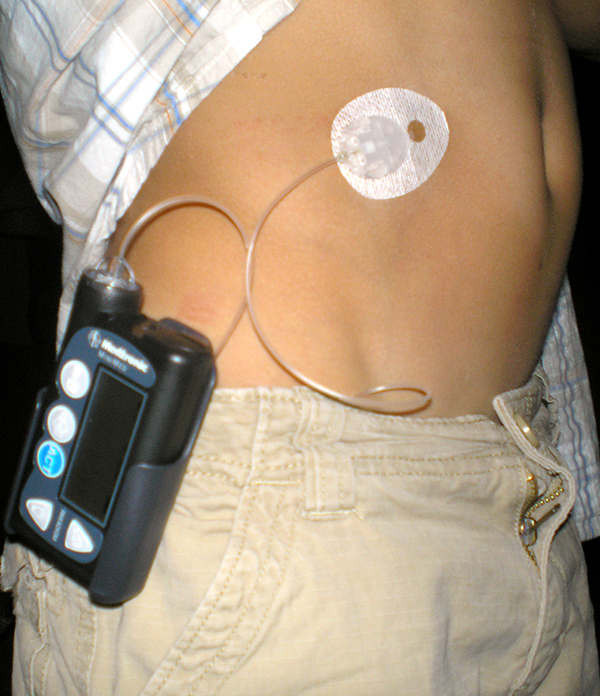Type Two Diabetes – New Correlations?
At this time in my career I’ve learned to be a bit suspicious of what I read, especially in “non-official,” news publications – even if they are medically related like these three that I’ll mention today about diabetes.
Boy with type II diabetes
Striving for headlines, deadlines and “splash” just is NOT the way to objectivity – no matter who does it!
Continuing to clean out my files of potential articles, there are three “studies” published in Medscape (A quasi-professional news blog for physicians) about type II diabetes (formerly called adult type) which just don’t meet standards for universal clinical credibility; but, which are interesting enough that you may want to at least scratch your chin and say: “Hmmmn…”
Type II Diabetes
We’ve already discussed how the former distinctions of type I and type II diabetes being child and adult (respectively) have now gone out the window as more and more children develop type II and more adults require insulin.
These three studies – one about meal timing and two about nuts – could have at least some applicability to both.
Meal Timing
Conventional medical and dietary wisdom has, for years, felt that 5 or 6 small meals spaced throughout the waking day would cause “least stress” on the already overworked pancreas which was trying to keep up with insulin production and beginning to fail.
This just makes common sense and is what we would do to prolong the life of anything that is beginning to fail (i.e. cause less stress).
A researcher at the Diabetes Center in Prague, Czech Republic wondered if this was such a good idea in light of the fact that in western cultures snacks have largely become needless junk food and very little else is readily available. And, of course, there’s the fact that overall multiple meals generally seem to fail and some animals do better on two meals as well.
She put 54 diabetic patients trying to loose weight into a “crossover” diet study which started half of them on 6 meals per day for three months then switching to large meals at breakfast and lunch for three months. The other half did the same thing but in reverse.
Both groups and both diets were on the same restricted diet of 500 calories less than the recommended daily amount for weight (average 1700 cal per day). The caloric and macro-nutrient levels were identical.
She reported her findings in “Diabetologia” (a respected peer-reviewed medical journal) which were that when on two-meals-a-day people: lost more weight; had less hepatic fat; had lower blood glucose; had lower fasting insulin; and, had lower fasting glucagon than when they were on six meals a day. All despite eating the same amount of calories.
The researcher acknowledges that the trial was small and that larger-scale, longer-term studies are needed and that other scenarios could be tried; for example, three meals decreasing in size.
None-the-less, 30-70 year-old, overweight, type-II diabetic men and women treated with oral drugs, having elevated HbA1c values significantly lost 1.4 kg more weight in 12 weeks on 2 meals a day than they did on 6 meals a day (-3.7kg vs. -2.3kg, p<.001).
Additionally, hepatic fat decreased a greater amount (-0.04% vs. -0.03%, p=.009); fasting plasma glucose and C-peptide reductions were more pronounced (P=.004 and .04 respectively; and, fasting plasma glucagon fell with 2 meals a day while it actually increased in the 6 meal-a-day group.
“Hmmmn…” All of these are good things for any diabetic to have. Even our latest drugs don’t have that effect on glucagon.
Her report closed with the suggestion that a practical approach might be to follow the old adage: “eat breakfast like a king, lunch like a prince and dine like a pauper.”
[Diabetologia, Published online May 15, 2014]
Pistacios
Ok, I have much more difficulty accepting the next two research findings about nuts; because, as it must be revealed up front, they were both financed by nut related industries.
However, let’s see what they reported to the 2014 European Congress on Obesity held in SOFIA, Bulgaria keeping in mind that it’s terribly easy for even unintentional bias to cloud results.
Nuts in general have already been found to be associated with a reduced risk for coronary heart disease through moderation of LDL cholesterol, triglycerides, and circulating glucose concentrations. And in a few type 2 diabetes studies, they have been shown to reduce post-meal glucose and insulin levels.
Researchers in Reus, Spain studied 49 obese, pre-diabetics. Each person was randomly assigned to eat either 57 grams of pistachios (about a handful) each day for four-months or a “control diet” – completely equivalent but without pistachios. Then, after a 2-week “washout period” they ate four months of the alternate diet.
Careful measurement of blood work showed that: fasting glucose, insulin, and insulin-resistance markers all decreased significantly after the pistachio diet compared with the control diet (p<.001). Weight and BMI didn’t change at all.
Additionally, other metabolic risk markers such as fibrinogen, glucagon-like peptide-1 (GLP-1), oxidized LDL, and platelet factor-4 showed a decrease but less statistically significant (p<.05). HbA1c and serum LDL cholesterol levels didn’t change much.
“Hmmmn…” Perhaps a handful wouldn’t hurt; but, keep in mind that these were carefully controlled, equivalent diets. Merely ADDING an EXTRA handful of nuts everyday to the same diet would probably cause weight gain.
Almonds
Not to be outdone, almonds also got their research on.
At Purdue University in Indiana 137 pre-diabetics were randomized to either: 43 grams (250 cal) of almonds per day with meals (breakfast or lunch); 43 grams as a snack (morning or afternoon); or, to no almonds.
The study only lasted for 4 weeks, and didn’t include as extensive blood workup as the previous study, but the researchers stated “those who ate the almonds felt less hungry and fuller than those who did not consume them. These effects were most noticeable when the almonds were eaten as a snack as was a small decrease in blood sugar.”
“Hmmmn…” As a general dietary guideline the USDA recommends about 43g of nuts per day in a healthy diet. All one can say from this research is that “it doesn’t hurt” and that doing it “especially as snacks, may help to moderate glycemia without promoting weight gain.”
[2014 European Congress on Obesity, Abstract T5:OS2.3]
12 Posts in Obesity (obesity) Series
- Five Diseases Reduced by Excersize – 7 Apr 2019
- Obesity now more common in world than being underweight – 18 Apr 2018
- BIG SODA, advertising conflict of interest – 2 Nov 2016
- Where does the fat go? – 9 Feb 2016
- Teens - Treadmill Dance to fight obesity and get fit – 1 Feb 2016
- 10 Ways To Ditch Obesity – 24 Jan 2016
- Fast Food – 16 Jan 2016
- Video: How to make our day harder - to expend more energy – 1 Dec 2015
- Type 2 Diabetes - Some Odd Possible Correlations – 6 Nov 2015
- Gastric Band Last Resort for Teen Obesity – 17 Aug 2015
- Obesity in Toddlers and Sugar-Sweetened Drinks – 10 Oct 2013
- Obesity Series: Intro/Index – 9 Oct 2013



